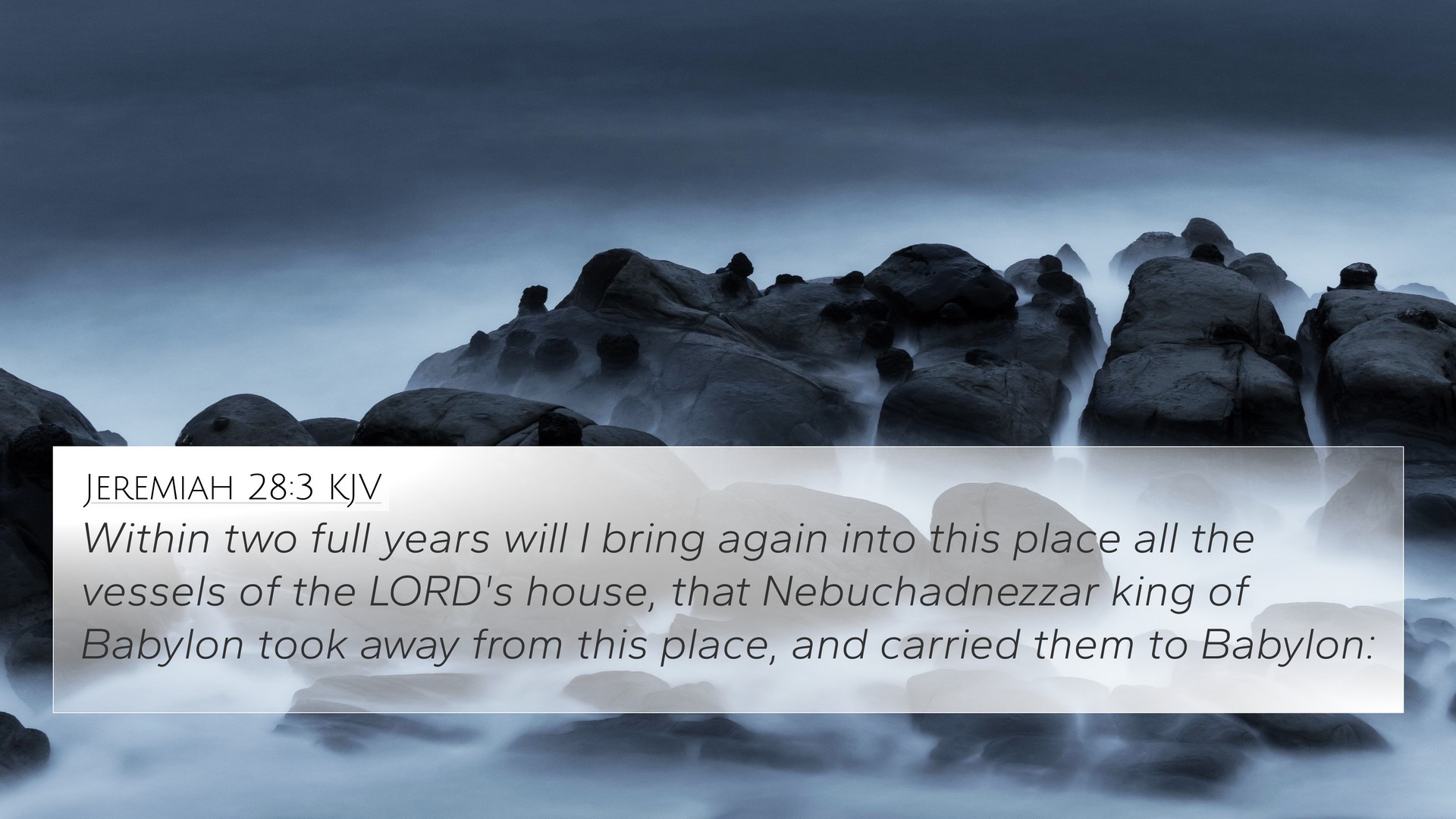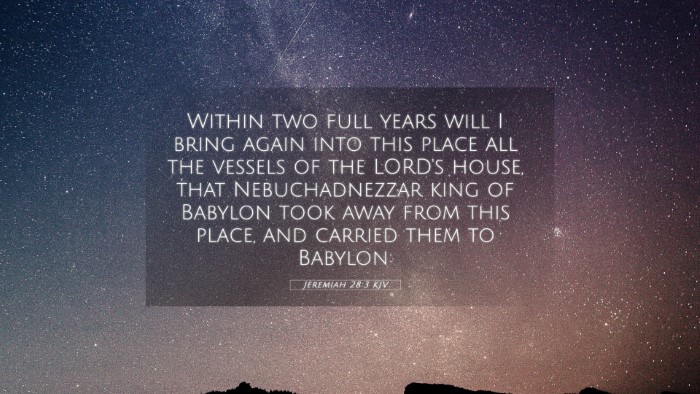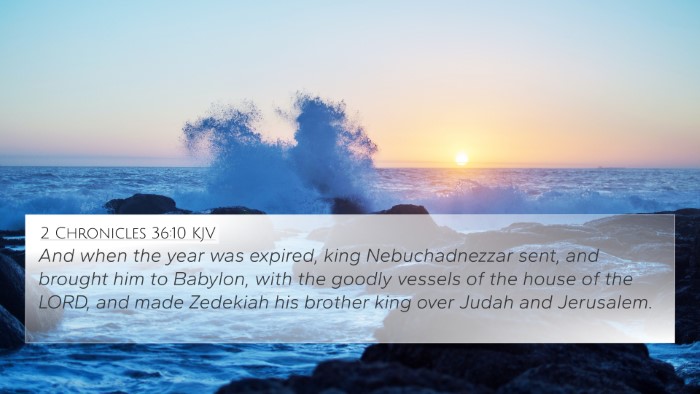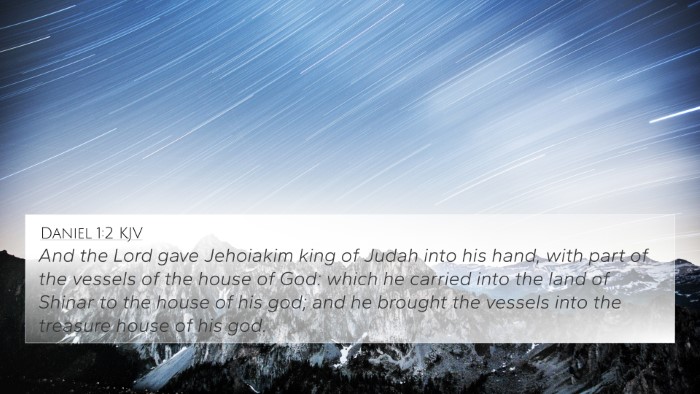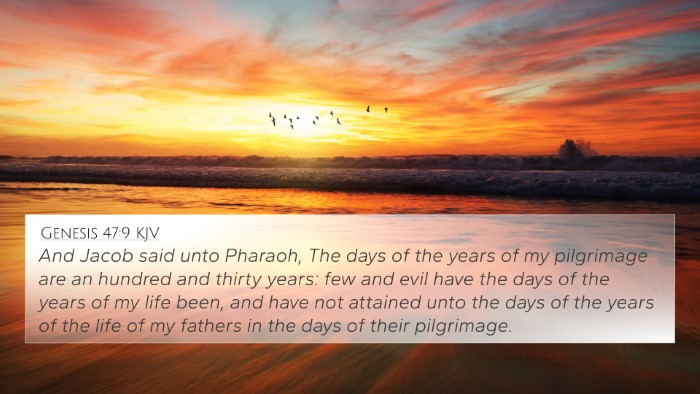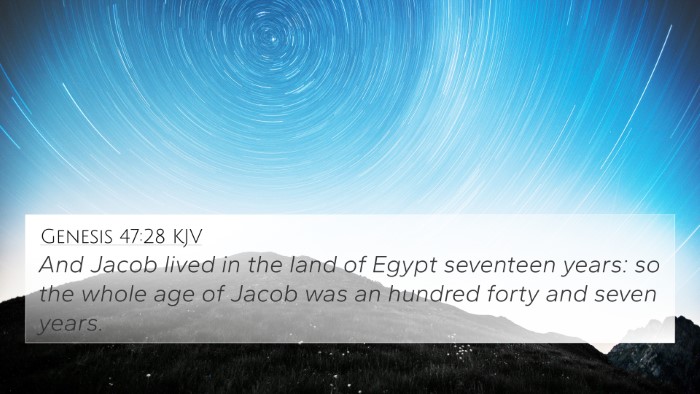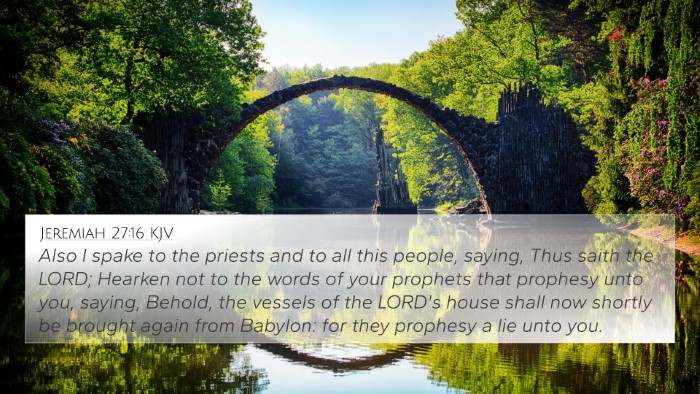Meaning and Interpretation of Jeremiah 28:3
Jeremiah 28:3 states: "Within two full years will I bring again into this place all the vessels of the Lord’s house, that Nebuchadnezzar king of Babylon took away from this place, and carried them to Babylon."
This verse carries profound implications within the scriptural narrative concerning prophecy, judgment, and restoration.
The context of this verse arises during a time of great turmoil for the people of Judah. The prophet Jeremiah, who often spoke warnings of impending judgment due to their unfaithfulness, encounters Hananiah, a false prophet who contradicts Jeremiah's warnings by proclaiming a message of peace and quick restoration.
Commentary Insights
Insights from public domain commentaries provide a richer understanding of this verse:
-
Matthew Henry:
Henry emphasizes the contrast between true prophecy and false prophecy. He notes that Hananiah's proclamation is an attempt to soothe the fears of the people, yet it lacks the foundation of genuine fulfillment. This verse serves as a divine declaration of restoration, but it highlights the necessity of patience and trust in God's timing.
-
Albert Barnes:
Barnes interprets this verse as a prelude to eventual restoration, pointing out that the vessels mentioned symbolize not only physical objects but also the glory of God among His people. The promise of their return reassures believers of God’s commitment to restoration and His covenant.
-
Adam Clarke:
Clarke captures the urgency and the tension of the moment. He speaks on the significance of the vessels taken by Nebuchadnezzar, linking them to the worship practices of Israel that were deeply intertwined with their relationship with God. Their return is indicative of a spiritual revival and national restoration.
Thematic Connections and Cross-References
This verse creates a thematic connection across the Bible concerning prophecy, hope, and restoration. A few cross-references that relate to Jeremiah 28:3 include:
- 2 Chronicles 36:18-19: Discusses the vessels of the house of God taken to Babylon, affirming the historical context of Jeremiah's message.
- Ezekiel 11:17: Reflects God's promise to gather His people and restore them, relevant to the parallel theme of restoration.
- Daniell 9:2: Offers a historical cross-reference concerning the prophecy and the timeline of restoration for Jerusalem.
- Isaiah 40:1-2: Speaks of comfort and a message of hope, drawing parallels to the reassuring promise found in Jeremiah.
- Zechariah 1:16: Mentions God's promise to return to Zion, reflecting a similar message of restoration and divine faithfulness.
- Haggai 2:7: Prophetic encouragement relating to the glory of the latter temple, echoing themes of redemption and rebuilding.
- James 4:10: Offers spiritual guidance involving humility and restoration, aligning with the focus on divine timing in restoration efforts.
Understanding the Relevance Today
The message of Jeremiah 28:3 and its interpretations serve as a reminder of the importance of faithfulness to God amidst troubling times. Cross-referencing these verses creates a comprehensive understanding of God's ongoing relationship with His people.
Cross-referencing Bible study methods become essential tools when interpreting scripture. Tools for Bible cross-referencing, including various concordances and cross-reference guides, help deepen one's understanding. The connections foster a holistic view of Biblical themes, emphasizing God's plans for restoration.
Conclusion
In summary, Jeremiah 28:3 not only affirms God's promise to restore but also highlights the responsibility of both prophets and the faithful to recognize the divine truth amid conflicting messages. Through systematic Bible cross-referencing, we can uncover the rich tapestry of connections that Scripture provides, allowing us to understand more fully the unity and coherence within God's Word.
